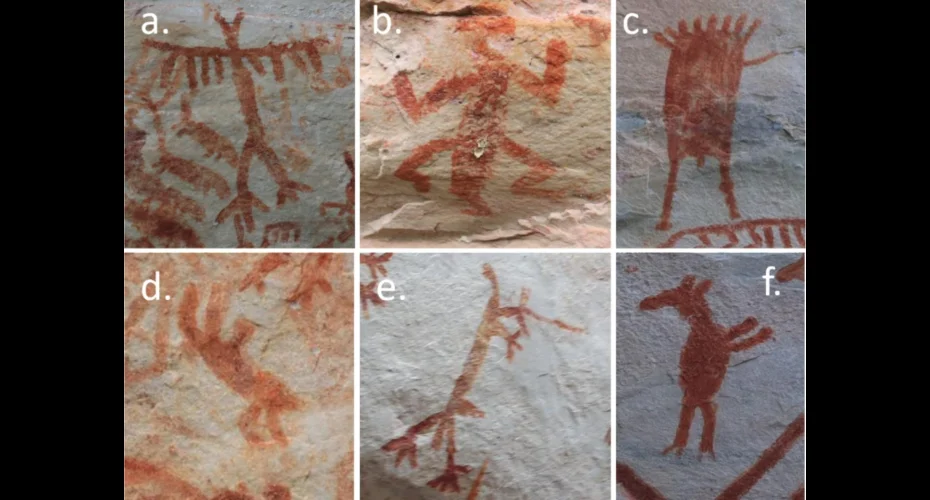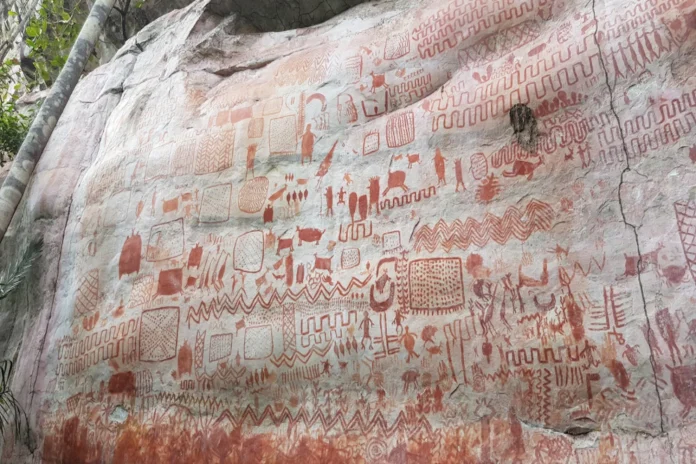Recently uncovered prehistoric wall drawings offer a fascinating glimpse into the complex relationship between humans and animals in the Amazon rainforest. Located in Colombia’s portion of the Amazon, these artworks, created with red ochre pigments on the rock walls of Cerro Azul, reveal how early inhabitants viewed animals both as a food source and as beings of supernatural significance.
The precise dating of these drawings remains uncertain, but new research suggests they could date back to around 10,500 BC. The artwork features vivid representations of various animals, including deer, birds, lizards, turtles, and tapirs. Researchers from the University of Exeter and other institutions have analyzed samples from the drawings and compared them with nearby remains to gain insight into these early cultures.
Interestingly, while common animals like fish are abundant in both the environment and the remains, they are scarcely depicted in the rock art. Similarly, felines, despite their spiritual significance to some local tribes, are notably absent from the images.

The art includes intriguing depictions of animal-human hybrids, though the exact meaning behind these representations remains unclear. Jose Iriarte, a professor at Exeter involved in the study, noted that the artwork provides valuable insights into the mythological and cosmological aspects of indigenous Amazonian life. “They offer a nuanced understanding of taboos, sources of power, and interactions with the supernatural,” Iriarte explained.
Political instability in Colombia had previously hampered scientific exploration in the region. However, after the 2016 peace agreement between the government and the FARC militia, archaeological work resumed, leading to the discovery of the Cerro Azul artwork in 2017. This research has highlighted that ancient Amazonian societies were mobile, relying on fishing, hunting, and gathering, and that their interactions with local fauna were deeply intertwined with ritualistic and spiritual practices.
Mark Robinson, an associate professor at Exeter, emphasized the significance of these findings: “These rock art sites provide the earliest evidence of human presence in western Amazonia, dating back 12,500 years. They offer a remarkable view into how early settlers perceived their world and their relationships with animals.”
The researchers caution against imposing modern interpretations on the creators of these artworks, particularly those that might overlook the spiritual sophistication of Indigenous cultures. Instead, they encourage us to appreciate the ancient art for its ability to illuminate how early societies viewed their reciprocal and interconnected relationship with nature.


